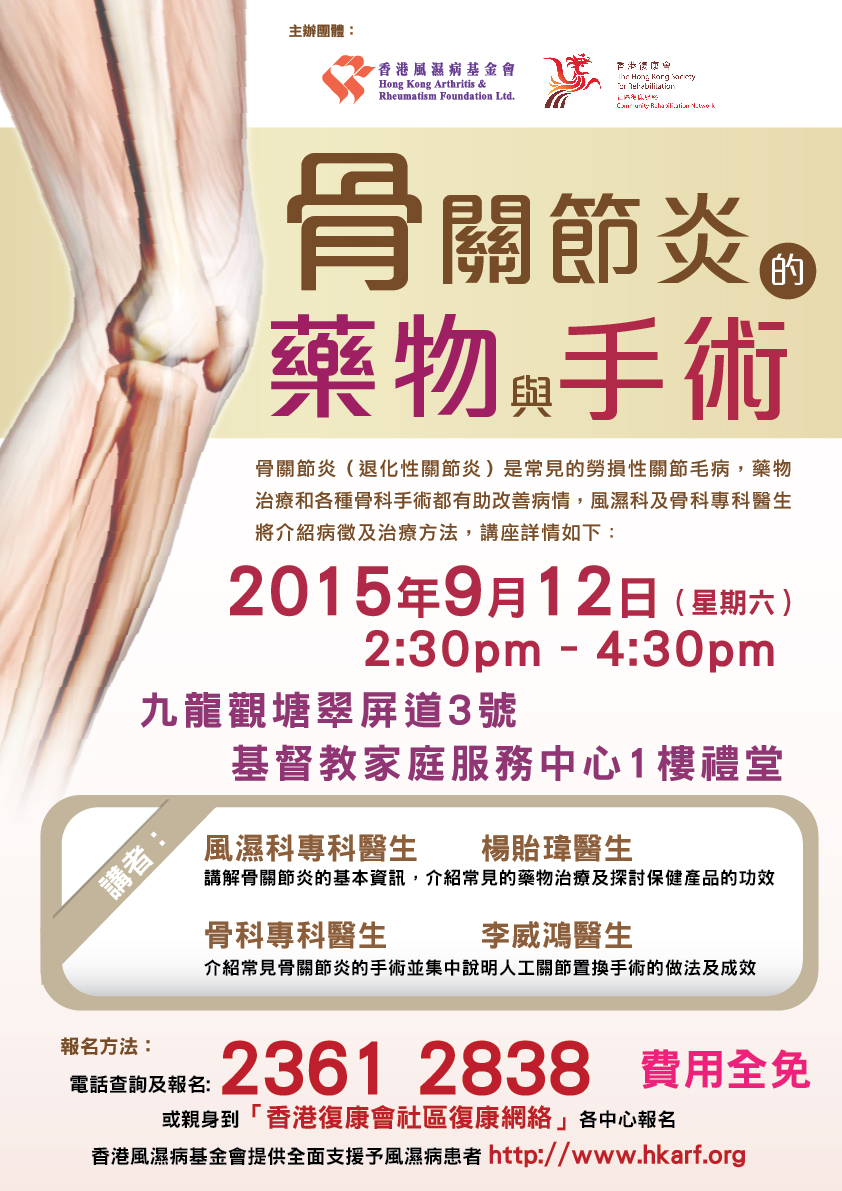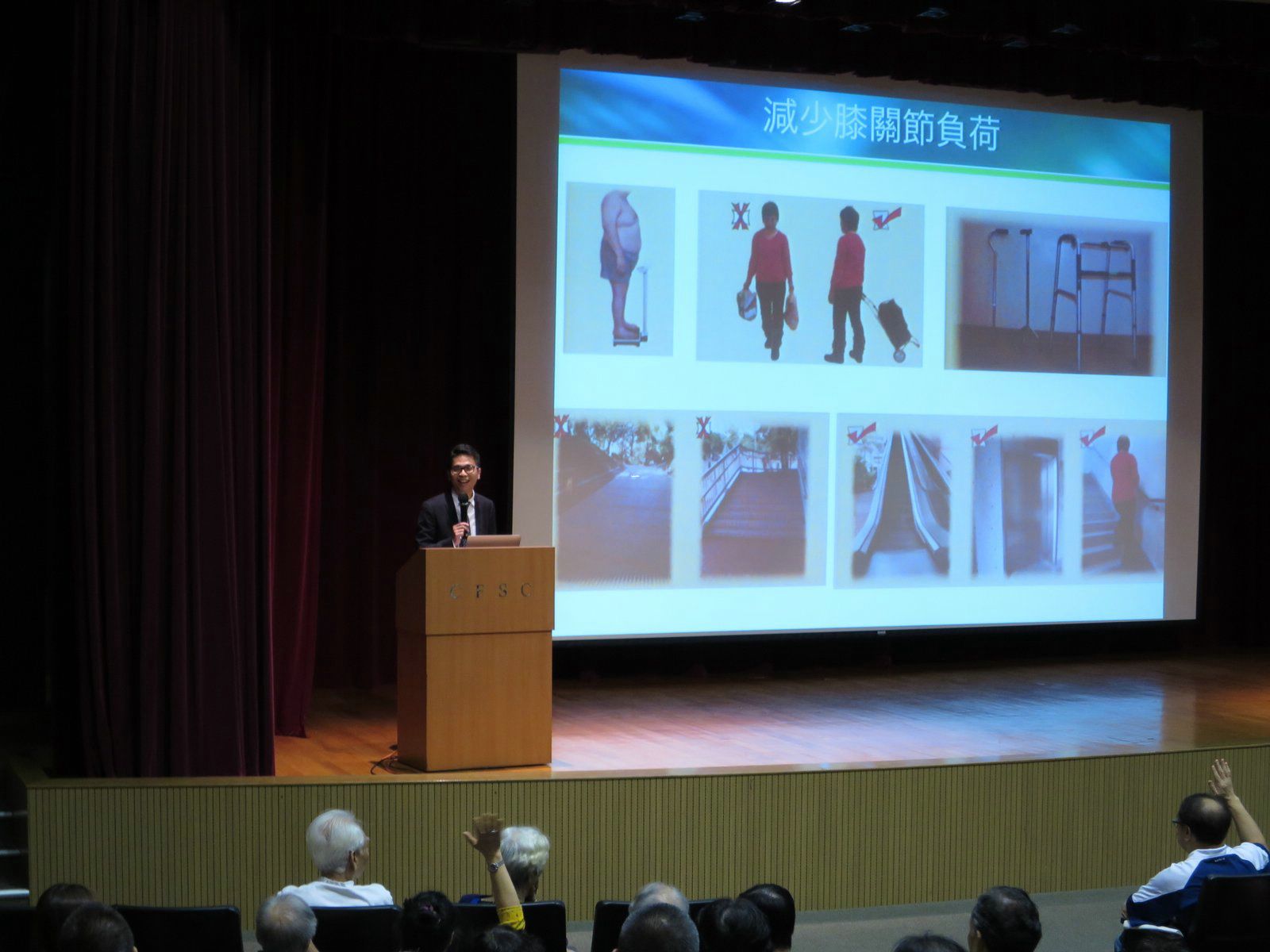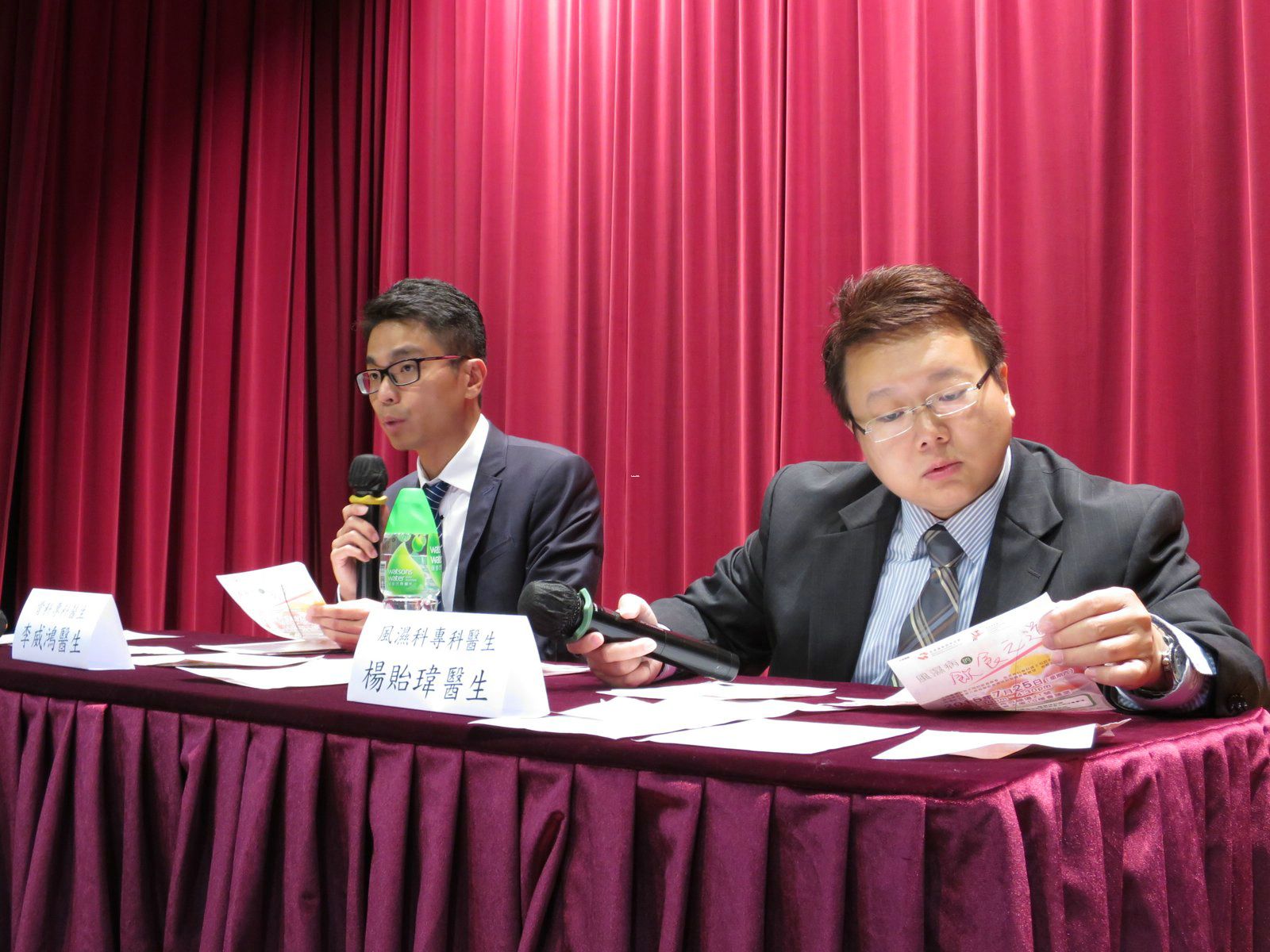
Educational Talk: OA treatment and surgery
12 September 2015
Educational Talk: OA treatment and surgery talk was taken part in the Auditorium of Christian Family Service Centre in Kwun Tong on 12 September 2015. The talk aimed to enhance people’s understanding on the diagnosis and treatment of osteoarthritis (OA) especially the surgeries. There were 264 participants in total.
The talk was started by Dr. Albert YOUNG, a specialist in Rheumatology, to introduce the basic information of OA. He stated that the public had a lot of misunderstanding on OA. Some might mix up OA with rheumatoid arthritis (RA) and some thought that OA was a normal ageing process and thus could not be cured. Dr. YOUNG illustrated the structure of joints and the process of developing OA. In addition, the disease was affected by many different factors including age, gender, body weight, injury history and heredity. With these explanations, he hoped the participants could understand the correct information of OA as well as the difference between OA and RA. Moreover, many thought that steroid had severe side-effect and thus prevented from taking it. Dr. YOUNG emphasized that there was clear guideline in applying steroid for treatment. If the drug was properly applied, it was very effective in relieving pain and inflammatory symptoms without resulting in avascular necrosis. He hoped this could eliminate the doubts and worries in applying steroid.
Apart from this, the talk was continued by Dr. Chester LIE, a specialist in Orthopaedics & Traumatology, to state that the joint pain was highly related to body weight and gesture. He suggested patients should reduce body weight and use rehabilitation aids to lessen the burden on knee joints. Using escalator instead of stairs, using walking aids and trolleys were common examples which helped to ease joint pain and improve function of joints. Also, Dr. LIE analysed the procedures and outcomes of different types of joint replacement surgeries. With the advancement in medical technology, most joint deformity could be managed. He showed some true cases that had obvious improvement after the surgery. The artificial joints could be used over ten years if they were kept in good repair. He hoped this could enhance participants’ confidence in joint replacement surgery.
The talk then followed by a Q&A session where participants actively asked questions. Dr. YOUNG and Dr. LIE answered with patience to solve their doubts. The audiences found the information from the talk useful and showed great interested in similar topic.












